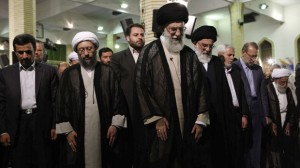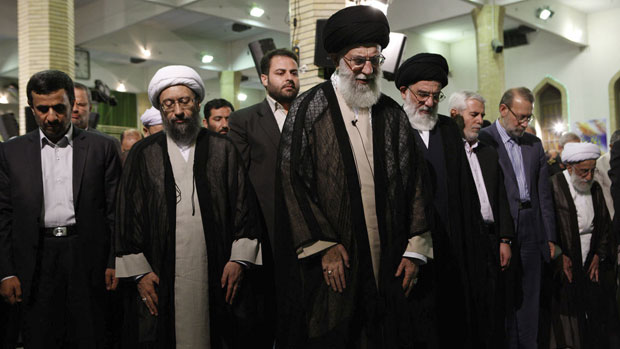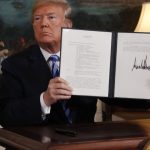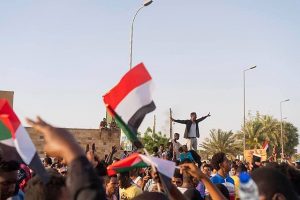 The International Civil Society Action Network (ICAN) has published a useful brief aptly subtitled, “Killing them softly”, about the impact of sanctions on the lives of ordinary people who live in Iran, particularly women and other vulnerable groups such as Afghan refugee women and children. I recommend it to everyone who thinks that sanctions can be potential instruments for positive change in Iran.
The International Civil Society Action Network (ICAN) has published a useful brief aptly subtitled, “Killing them softly”, about the impact of sanctions on the lives of ordinary people who live in Iran, particularly women and other vulnerable groups such as Afghan refugee women and children. I recommend it to everyone who thinks that sanctions can be potential instruments for positive change in Iran.
To be sure, most individuals and organizations that push for “crippling” sanctions do so in the name of Israeli security and/or non-proliferation with little or no regard for the resulting impact on Iran’s population and civil society. In a world where economic warfare is considered diplomacy, more sanctions will apparently be the name of the game “until Iran begins to negotiate seriously” or “chooses a different path” — whatever that means. Pretensions or hope regarding the utility of blunt and wide-ranging sanctions for changing the way the hardline leadership in Iran treats its population, or, even better, for bringing about a change of regime in a “peaceful” way, are also out there.
The ICAN brief, while using the words of activists in Iran, does a good job of explaining how draconian sanctions imposed by the United States and the European Union ultimately harm Iranians who are caught in a battle that has very little do with their dreams of living decent lives and impacting their government’s policies through civil activism. But this is not to suggest that the Iranian government has escaped the impact of sanctions unscathed. The leadership is held responsible for the mishandling of an economy which, by all accounts, is faced with both stagnation and hyperinflation. And, if we take at face value the words of parliamentary speaker Ali Larijani, 20 percent of Iran’s current problems can be attributed to sanctions that have limited Iran’s access to the foreign exchange needed for the import of strategic goods from abroad due to the reduction of oil exports and Iran’s inability to acquire exchangeable currency for the exported products. Larijani attributed the remainder of the problems, mostly related to rampant inflation, to the poor implementation of a subsidy reform plan that did not give enough attention to production in all industries including agriculture.
The right or wrong belief that better economic management can help Iran overcome the impact of sanctions perhaps explains why internationally-imposed draconian pressure has not led to a change in the leadership’s calculations regarding the nuclear program.
In fact, according to Iran’s Leader Ali Khamenei, Western governments
…openly say that it is necessary to force the Iranian government officials to revise their calculations by intensifying pressures and sanctions, but looking at the existing realities causes us not only to avoid revising our calculations, but it also causes us to continue the path of the Iranian nation with more confidence.
In other words, instead of a recalculation on the part of the Iranian government, the Iranian population is going to have to get used to a “resistance economy”. What does that entail? Mr. Khamenei’s answer:
Putting the people in charge of our economy by implementing the general policies specified in Article 44 of the Constitution, empowering the private sector, decreasing the country’s dependence on oil, managing consumption, making the best of the available time, resources and facilities, moving forward on the basis of well-prepared plans and avoiding abrupt changes in the regulations and policies are among the pillars of an economy of resistance.
Considering how these objectives have been in the books since at least 2006 when privatization, empowerment of the private sector and efficiency became official policy — and produced little in the way of concrete results — it’s not clear what an administration that is working through its last year can achieve beyond perhaps “managing consumption.”
A few steps have already been taken towards that goal. This week, several economy-related ministers as well as the head of the Central Bank of Iran (CBI) met with members of parliament in a closed session. Parliamentary meetings are by law open and publicly broadcasted. Article 69 of the Constitution only allows for closed sessions under “emergency conditions, if it is required for national security”. This closed meeting and Khamenei’s words clearly suggest an understanding of the emergency situation that Iran is facing.
The first decision that resulted from this meeting was the CBI’s elimination of what is called “travel currency”. Until now, Iranians could get $1,000 a year at the lower government exchange rate of 12,260 Rials per dollar for their trips abroad (the lower $400 per year for pilgrimage travel to Iraq and Saudi Arabia was maintained). According to the head of the Majles’ Economy Commission, Arsalan Fathipour, the $10 billion worth of travel currency that leaves the country every year has no economic justification and has been halted. Travelers now have to rely on an unofficial, but not illegal, floating market rate that has hovered between 19,000 and 20,000 Rials per dollar during the past couple of months.
The lower official exchange rate will remain for the import of basic and strategic goods from abroad in order to limit spiraling inflation. But everything else will probably be imported at the higher rate. As pointed out by Virginia Tech economist Djavad Salehi Isfahani, this multiple exchange rate system, despite inefficiencies, makes some sense when a country is being denied access to global markets, provided action is also taken to:
…minimize misallocation and corruption, for example by publishing a complete list of all official foreign exchange sold to private importers along with the list of the items they import. The alternative, which is to sell all currencies at the rate set in the parallel market, is to give too much influence to sanctions and to sentiments that underly capital flight.
Whether these steps will also be taken is yet to be seen. Another announcement after the close of the Majles meeting was that some sort of command center comprised of representatives from of all branches of government has in effect been created for the resolution of economic problems and will soon gain implementation powers through legislation. According to Donyaye Eqtesad, the country’s most influential economic daily, the push by some influential MPs is for this command center to have “special powers so that in the coming year it can take the necessary steps for the implementation of the strategy of resistance economy.”
To my mind, this also means that there is not much confidence among the Iranian political class in the Ahmadinejad Administration’s ability to steer the country in a positive direction during the last year of its tenure. This political class holds President Ahmadinejad responsible for his incompetent handling of the country, but due to the urgency of the escalating sanctions regime, no longer considers challenging him and his ministers a useful way of expending their energy. Talk of “working together” and “unity” has permeated the language of the conservative and hardline politicians who are currently running Iran. This language is not meant to extend to the reformist and even centrist politicians and technocrats who have been essentially purged since the 2009 presidential election, but does indicate a closing of ranks among an even narrower circle of politicians in the face of adversity and in the name of resistance.
If ICAN’s analysis is accurate, it also foretells harsher economic realities for the most vulnerable elements of Iran’s population, a harsher political environment for those agitating for change, and a more hostile setting for those who have tried to maintain historical links between Western societies and Iranian society.
Sanctions impact calculations, but usually not in the intended fashion.






Professor Farhi is to be commended for presenting Iranian people’s perspective, a perspective missing from US mainstream media. Unfortunately, the vulnerable strata of population will pay even more dearly when the bombs start falling. However, the Iranian people have a resorvoir of great empathy from the Arab nations. They have admired Iran’s resistance to the redomination by the United States. Attempts to demonize Iran or fuel sectarian strife between Shiite and Sunni is recognized as a plot of the foreigners and their reactionary allies in the Gulf. Professor also points out how out of touch with reality the Islamic government is. Thanks.